KRK RP-10-3 is the first pair of speaker I bought when I officially registered Quantum-Music Mastering as a company about 4-5 years ago. My father, my girlfriend and I teamed up to by this pair of speaker and it was by far the best thing we could buy with the budget we had at the time.
I was used to working on small KRKs. I also had huge HiFi speakers before that and I had great confidence that I could achieve great masters with larger than life KRKs.
According to specs the KRK RP-10-3 were great: flat and extended frequency response, with adjustable low and top ends. Just what I needed for mastering… well I thought.
So, what’s wrong with it ?
When I plugged it in and started to work on it, I noticed many problems with that pair of speakers:
- The bass was soft and undefined, long ringing.
- The tweeter had no detail, and no realism at all.
- When working all day long on it, ear fatigue was a real problem (mainly due to the tweeter).
- The integrated amp was incredibly noisy.
- Soft, undefined and ringing low end
For the first one, the easy fix was to block the port with the foam. I used the kind of foam that we put on beds to make the mattress softer. People get rid of these all the time. That cost $0.
The foam isn’t 100% opaque to bass, so it wasn’t technically sealed. Still, the pressure drop caused by the foam was enough to tight up the transient response. The bass was then dryier and stopped on a dime. The drawbacks were the following:
- I lost a bit of efficiency; I had to increase the woofer level. Since we have a knob for that at the back, it wasn’t a problem.
- I lost a bit of low end extension. I ended up removing temporarily the foam when I needed to check something below 40 Hz. It’s wasn’t perfect, but still a viable compromise.
1 and 2. Tweeter that no detail and high distortion levels
That one was the less obvious one. I had this brand new pair of speaker and I’m like “I’m going to cut the tweeter out of it and upgrade it”. These days, I’m designing speakers all the time, but at that time I didn’t have the knowledge I have today. I first tried to call Solen (a DIY Speaker shop in the greater Montreal) and they told me they couldn’t help me. Still, I was determined to make it work so I got started by looking what was under the hood:
The replacement tweeter

Finding a good tweeter that could press fit in the 1 3/8″ was the biggest challenge. I was disappointed to see that no high end tweeter would work. Still, I’ve been able to find something quite decent, especially for the price.
Available for less than $10 on Parts-Express (http://www.parts-express.com/dayton-audio-nd16fa-6-5-8-neodymium-dome-tweeter–275-025), Dayton Audio ND16-FA is the best tweeter I found that could physically fit the 1 3/8″ hole. It’s a 5/8″ neodymium soft dome basically outperform most tweeter in that price range, including the KRK original one.
The specs
Frequency Response
The RP-10-3 being a 3 way design, the tweeter doesn’t need to have a super extended frequency response. That’s good because flat and extended frequency responses come at a price.
Against our first impression, the frequency response is really usable. The descending slope will be compensated by the crossover slope to give a flat final response. The response is ruler flat on its audible range, which is what matter the most to me. There is clearly a breakup node at the end of the audible spectrum, which some people would call “Air”. I’m personally okay with that, as super expensive tweeter also have this shape sometimes, and it kind of compensate for the frequency response of our ear. So, it’s all good on that side.
Distorsion Profiles
Working all day on speakers, I’m very picky about distortion profiles. Having a clean non-fatiguing sound contributes greatly to the quality of the studio experience. I used to get very tired at the end of the sessions as my KRKs where literally killing my ears. Low distortion levels are often refer to “clean”, “pure”, “detailed” sound.
The ND16Fa has a pretty clean distortion profile for a tweeter in this range price. This is especially true above 4 kHz, as the second order get quite high below this point. The KRK being crossed around 3.5 kHz means the tweeter can be used without any issues.
Transient Response
The thing I hated the most about the original tweeters were how undefined were the high frequencies. I was telling myself: “Common! It’s a tweeter, it’s its job to render high frequency well!”
This is often due the fact that tweeter doesn’t respond fast enough when it should play and keeps ringing when it should stop.
For those who are fan of colorful 3d plots, you’ve been served! This chart above shows us how tweeter will react once we play a impact noise (i.e. snare). It is like a frequency response plot, but the third dimension is time. You can see that in the range of interest (3.5 kHz to 16 kHz) the tweeter responds exactly how it should: It plays when it plays and stops on a dime when there is no signal. On that matter, the ND16Fa competes with very expensive tweeter. There are clearly some ringing around 2.5 kHz and around 21 kHz, but both of them are out of our range of interest.
What about the crossover ?
At the time, I was looking for a quick fix rather than an elegant optimized solution. In other word, I didn’t even looked at it.
I knew what was the crossover point and I measured the impedence of both tweeter. I knew the new tweeter had a slightly bigger impedance, but it was all fixed by cranking the HF level up a bit, so no problem here. The crossover frequency might have shifted slightly, but nothing noticeable.
3.The integrated amp was incredibly noisy.
For the last point, the only way I “addressed” it was by using them in a mid-field/far field configuration.
How it looks like after:
That’s it! That wasn’t complicated at all, right ? Still, I have to admit that it took some guts to cut out the tweeter from a brand new pair of speaker. That said, that was totally worth it.
How does it sound you ask ? Well, it still doesn’t sound like a $10000 pair of speaker, but there was definitely some major improvements. Not bad for $10 mod !

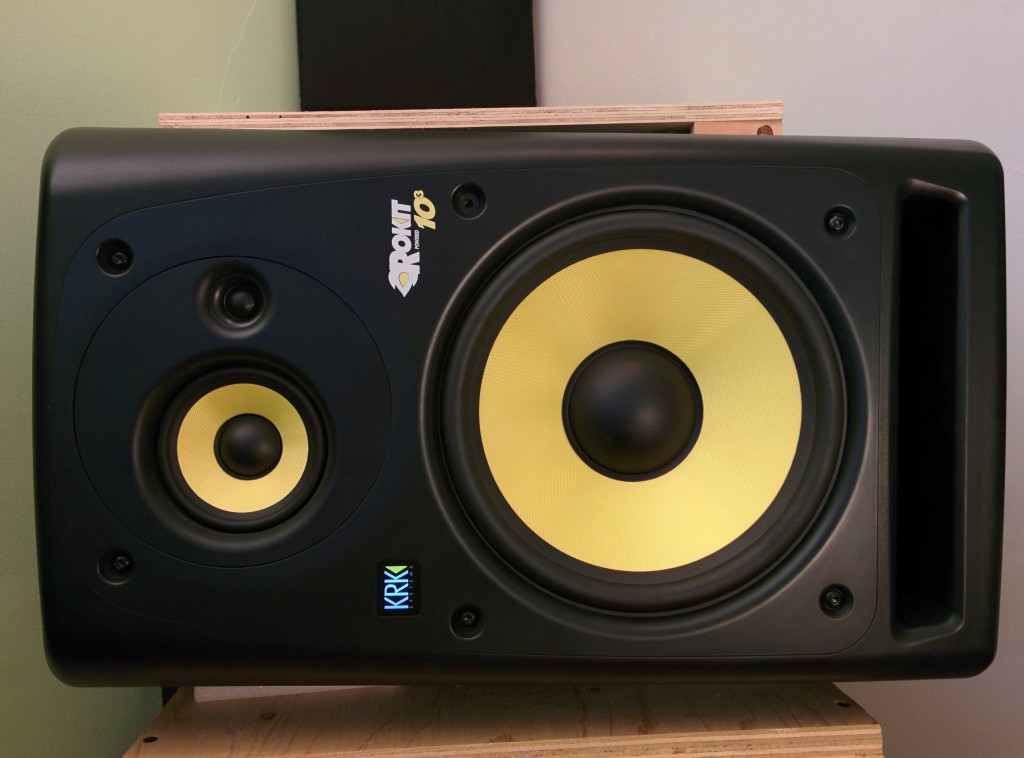
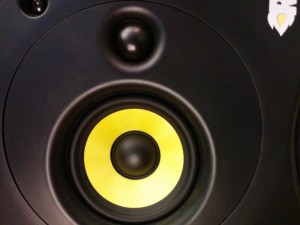
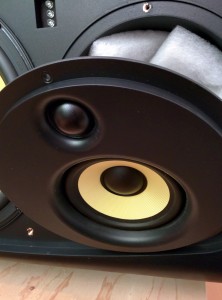
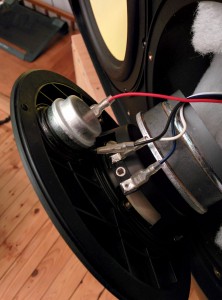
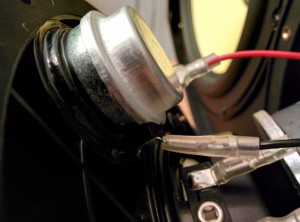
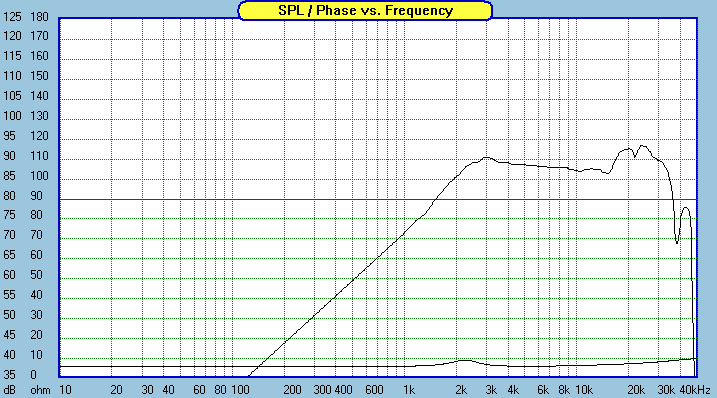
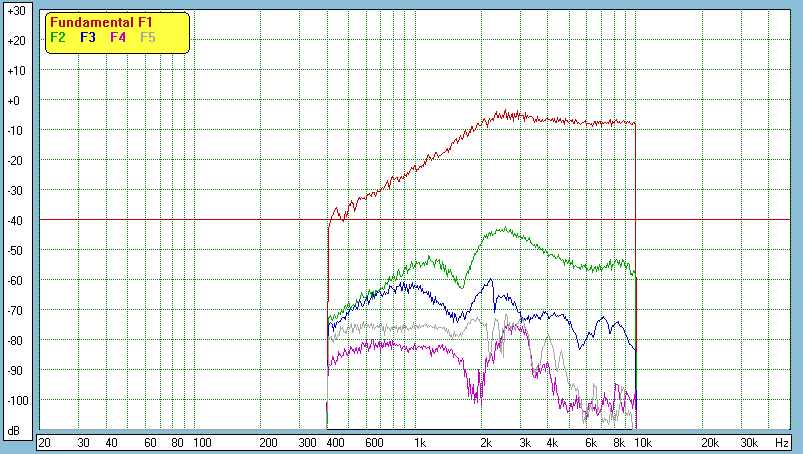
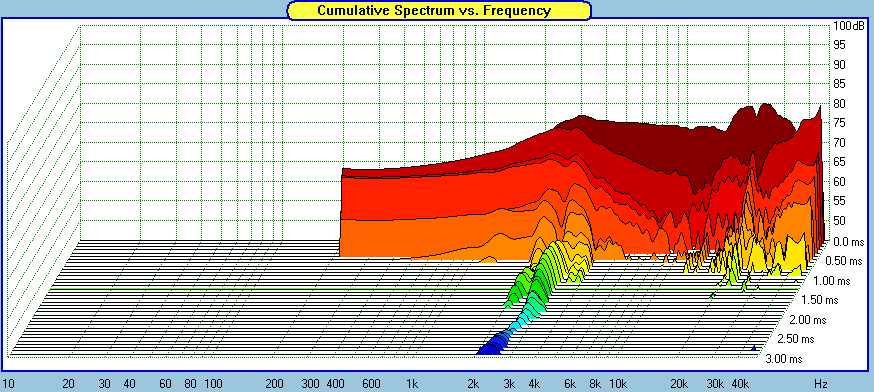
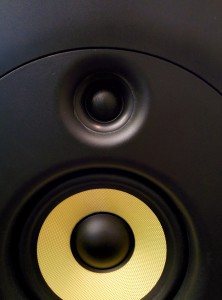
Hi Chris !
After reading your article, I was wondering what do you suggest about speakers for mastering?
Thanks
Fred
Hello Fred! Thanks for your comments.
I will write an article with my thoughts on the subject soon.
Chris
I use the 10.3 with benchmark HGC dac.I planned to go for ATC 50ASL ,but the economic crisis made that only a dream. I changed the tweeters with the Daytons. I agree that they are far superior. I’ve heard through them things in certain recordings, I hadn’t noticed they were there. I’ve read a lot of good critics for GENELEC M040 even in purely hi-fi magazines (6 moons). Do you have any opinion about them? I’m planning to use them with one (or later two) subwoofers for a total of about 2000$.
thanks for reading…
Hello George,
I personally dislike genelecs. I think you can do better by yourself, simply going on http://www.zaphaudio.com and picking one of the design that suit you budget.
I built the ZDT 3.5 and it was my best investment.
Chris
Thanks for your answer. I’ve seen ZDT 3.5 in your site. The problem is that it isn’t active, so I’ll have to purchase a power amp for the benchmark, and so…we go up again.